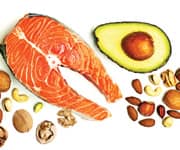Life Extension Magazine®

A wealth of data reveals that cognitive decline is not an inevitable consequence of growing older.1
Maturing people can exert tremendous control over their rate of brain aging.
For those with mild cognitive impairment, effective protocols to reverse brain deterioration are being validated in human clinical trials.
When it comes to preventing or treating dementia there is no single approach.
Everyone should strive for blood pressure in thelowest tolerable ranges. I keep my blood pressure under 115/75 mmHg. Others require somewhat higher blood pressure to push blood through their damaged circulatory systems.
Reducing chronic inflammation is essential for protecting aging brains. Most of you accomplish this via healthy behavior practices.
In a major finding published in 2019, a group of elderly Americans underwent cognitive testing, MRI scans to assess brain function, and blood tests to assess nutrient status.2
The results identified five categories of plasma nutrients associated with enhanced cognitive performance.2 The cognitive tests used in this study measured general intelligence, executive function, and memory.
The plasma nutrients associated with improved cognitive performance include carotenoids (like lycopene), homocysteine-lowering vitamins (folate and B12), vitamin D, and a healthy balance of omega-3 to omega-6 fatty acids.
MRI imaging revealed enhanced brain network connectivity in those with higher plasma carotenoid status and healthy balances of omega-3 and omega-6 fatty acids.
The authors of this 2019 study emphasize that despite abundant evidence in favor of a single nutrient or a few nutrients for cognitive health, clinical trials aimed at slowing brain aging are often unsuccessful.
They postulate this can be explained by the focus on single nutrients and a failure to consider the interactive effects of nutrient combinations.
In their study, higher levels of nutrient combinations measured in blood plasma were associated with enhanced cognitive performance and improved brain network efficiency.
The authors concluded that these findings contribute to “the development of novel nutritional therapies for the targeted treatment and clinical management of cognitive and neurological impairments in the aging brain.”2
In an unprecedented human study, scientists from the University of Illinois used advanced analytical and imaging techniques to examine the relationship between groups of nutrients and their effects on cognition and memory. The study included 116 healthy adults with an average age of 69.2
The study found that combinations of related plasma nutrients, termed nutrient biomarker patterns, were strongly associated with cognitive function and brain networking efficiency.
This innovative research integrated three different types of measurements:
1) Specific nutrient biomarker patterns in blood (plasma),
2) Cognitive function as assessed by comprehensive mental tests, and
3) Brain network connectivity as measured by specialized functional MRI imaging.
How the Study Was Conducted

The scientists first measured levels of plasma nutrients and grouped them into nutrient biomarker patterns, or classes of related dietary compounds.
Testing plasma nutrients enables levels of absorbed nutrients to be precisely measured. In contrast, many dietary studies rely on self-reported questionnaires, which are notoriously unreliable.
In this study, the authors analyzed a set of 32 plasma nutrient biomarkers related to the Mediterranean diet.2,3 This enabled the scientists to determine which combinations of nutrients correlate with healthy cognition and functional brain network connectivity.
This technique provides a powerful method for capturing interactive effects of multiple nutrients as opposed to studying an individual nutrient in isolation.
After the blood draw to measure plasma nutrients, study subjects underwent comprehensive cognitive testing to measure overall intelligence, executive function, and memory.
Functional MRI imaging was then used to assess efficiency of brain network connectivity.
What the Study Uncovered

Specific nutrient biomarker patterns were associated with better cognitive performance as follows:
- A proper balance of certain omega-3 and omega-6 fatty acids was associated with higher function of two domains of memory;
- Higher levels of lycopene were correlated with better scores in three separate domains of memory and with better executive function;
- Higher levels of the omega-3 fatty acids EPA, DHA, and DPA were strongly linked to better executive function and higher overall intelligence;
- Carotenoids including trans-lutein were positively associated with two measures of intelligence;
- The grouping of the homocysteine-reducing B-vitamins (vitamin B2, folate, B12) and vitamin D was associated with better executive function.
Additionally, functional MRI analysis revealed that three nutrient biomarker patterns significantly influenced the relationship between functional brain connectivity networks and measures of intelligence and cognitive function.
The study’s findings regarding the benefits of lycopene on memory and executive function are not unexpected.
Human and animal studies have previously shown that lycopene may protect the brain against aging and cognitive decline, and that higher levels are associated with lower Alzheimer’s mortality and less severe dementia.4-6
Higher omega-3 status was related with overall intelligence, while omega-6 fatty acid balance and lycopene were associated with better executive function.
Impact of Excess Omega-6 Fats on The Brain

Most modern diets contain excessive amounts of omega-6s and insufficient amounts of omega-3s.
An unfavorable omega-6 to omega-3 ratio has an adverse impact on brain function.7
The 2019 published human study that measured plasma nutrient levels found that proper balance of omega-6 to omega-3 fatty acids is associated with higher function of two measures of memory.
The optimal omega-6 to omega-3 ratio approaches 4:1. This means you want about four omega-6 fatty acids for each one omega-3 in your blood plasma.
This study found higher plasma levels of omega-3s to be strongly linked to better executive function and higher overall intelligence.
These findings corroborate the results of an earlier randomized controlled trial that found that supplementation with omega-3 fatty acids improves brain structure, function, and cognitive outcomes.8 Additional studies link omega-3 fatty acids to global cognition,9-14 general intelligence,15 memory,16-18 and executive function.8,19,20
The totality of this data provides a powerful basis for aging humans to alter their dietary patterns to preserve neurological functions.
The problem is that typical dietary ratios of omega-6 to omega-3 fatty acids are far in excess of optimal ratios identified in this and other studies.
On average in the United States, the omega-6 to omega-3 ratio is a disastrous 16:1. This means that a typical American eats 16 times more omega-6 fats than omega-3s.
You can cut down on omega-6 intake by reducing consumption of processed and fast foods, fatty meats, cured meats and polyunsaturated vegetable oils (corn, sunflower, safflower, soybean, and cottonseed oils).
Use extra virgin olive oil for cooking and in salad dressings. Olive oil is a good substitute because it provides beneficial monounsaturated fats that can take the place of omega-6 fats that are so pervasive in Western diets.
Eat more oily fish and take a high-potency fish oil supplement to boost your omega-3 plasma levels.
The Omega-6 Dilemma

Our brain and body require omega-6 fatty acids to sustain life.
The problem with modern diets is excess consumption of omega-6 fats and deficient intake of omega-3s.
Research suggests that too many omega-6 fats increase risk of cardiovascular disease,21 cancer,22,23 inflammation,24,25 and neurodegeneration.26-29
For most people, the amount of dietary omega-6 fats should be reduced and omega-3 consumption increased.
Foods high in omega-6 fats include processed snacks and fast foods.
Refined vegetable fats, such as soybean oil, are used in cookies, crackers, sweets, salad dressings and most fried foods. Soybean oil is so ubiquitous that an astounding percent of calories in the American diet are estimated to come from this single omega-6 source.
Poultry (chicken, turkey, duck), which many people eat in lieu of red meat, is a rich source of omega-6 fats. A chicken leg contains about 1,800 mg of omega-6 fatty acids.30 Turkey contains almost as many omega-6s as chicken while duck contains less.
When a smaller amount of chicken is fried in vegetable oil and eaten as part of a fast food chicken sandwich, the amount of omega-6 fats surges to over 12,000 mg.31
If you have a salad with a soybean or safflower oil dressing, you’d consume about 7,200 mg of additional omega-6 fats.32
So, a meal from a fast food restaurant consisting of a fried chicken sandwich and salad can result in over 17,000 mg of omega-6 fats being eaten.
The ideal ratio of omega-6 to omega-3 consumption is about 4 to 1. This means for each four omega-6s you eat, you should compensate with one omega-3. This 4-to-1 ratio, however, is difficult for most people to accomplish.
A typical serving of wild salmon may provide 2,000 mg of omega-3s.33 As fish farming becomes more prevalent, however, the amount of omega-3s contained in fish meals has declined.34
We at Life Extension recommend that people take about 2,400 mg of omega-3s (EPA/DHA) from fish oil supplements each day.
So, if you include omega-3 foods in your diet and supplement with fish oil, you may provide yourself with around 4,000 mg of omega-3s each day.
You then can ingest as many as 16,000 mg of omega-6s each day and potentially achieve a healthy 4:1 plasma ratio of omega-6 to omega-3 fatty acids. This means four omega-6 fats for every one omega-3.
To make sure you understand this, under this scenario, if you consume 16,000 mg of omega-6s a day along with 4,000 mg of omega-3s, your plasma levels may achieve a healthy 4-to-1 ratio.
In an ideal world, you’d want to ingest an almost equal number of omega-6 and omega-3 fatty acids. I personally strive towards a 1-to-1 ratio of ingested omega-6 to omega-3 fats but understand we each have differing dietary patterns.
When considering that the average American eats 16 times more omega-6 fats than omega-3s (16:1 ratio), a 4-to-1 ratio (4:1) is a huge improvement.
The sidebar on the next page provides some examples of foods high in omega-6s that you may want to reduce or eliminate from your diet.

Foods High in Omega-6 Fatty Acids
Omega-6 fats are essential to sustain life. You cannot live without them.
The problem is that modern dietary practices provide too many omega-6-rich foods and not enough omega-3s.
Table 1 on this page reveals strikingly high amounts of omega-6 fats in common foods.
The sheer volume of ingested omega-6 fats contributes to a host of age-related diseases including neurodegeneration.
By reducing intake of foods high in omega-6 fats, you can achieve a healthier balance of fatty acids in your plasma. This, in turn, has been shown to improve cognitive performance and brain health.
Below is a quote from the 2019 published study that measured plasma nutrients and correlated them to neurological performance/function:
“Accumulating evidence indicates that omega-6s confer beneficial effects on cognitive performance when their ratio with respect to omega-3 polyunsaturated fatty acids approaches one. The ratio of omega-6 to omega-3 NBPs [nutrient biomarker patterns] observed in the present study [approximates] the ideal ratio needed to confer benefits to cognitive performance and brain health.”2
Said differently, the authors of this 2019 study advocate for drastic reductions in ingested omega-6 fats and increases in omega-3s. They advise that for each milligram of omega-6 fat you eat, consume about an equal amount of omega-3.
Table 1. Omega-6 Content of Common Foods |
|
| Food | Omega-6 Content |
| Sweet and sour chicken, one serving (Chinese restaurant) | 39,148 mg35 |
| Crunchy onion rings, one serving (Applebee’s) | 30,989 mg36 |
| Sunflower seeds, oil-roasted, 2 ounces | 19,000 mg37 |
| French fries, one serving (T.G.I. Friday’s) | 11,862 mg38 |
| Coleslaw, one serving (Denny’s) | 6,690 mg39 |
| Plain potato chips, 1 ounce | 4,258 mg40 |
| Taco salad, one serving (Taco Bell) | 3,492 mg41 |
| Chocolate cake, small slice | 1,114 mg42 |
| Fried chicken breast (212 grams) (KFC) | 12,271 mg43 |
| Fried fish fillet, one serving (201 grams) (Denny’s) | 10,315 mg44 |
| Macaroni and cheese, one serving (175 grams) (Cracker Barrel) | 5,861 mg45 |
| Single hamburger with cheese, one (236 grams) (Wendy’s Classic Single) | 2,697 mg46 |
| Cream of mushroom soup, condensed, cup (128 grams) (Campbell’s®) | 3,576 mg47 |
| Ramen noodle soup, one package (81 grams) | 1,682 mg48 |
| Edamame, one cup (155 grams) | 2,773 mg49 |
| Ready-to-drink nutritional shake, one serving (8 fl oz) (Ensure) | 3,129 mg50 |
| Pound cake, one serving (55 grams) | 4,441 mg51 |
| Frozen red raspberries, one cup (140 grams) | 21 mg52 |
A New Term: “Dementia Prevention”

In the 2019 study that measured levels of plasma nutrients in relationship to brain function, the term “dementia prevention” was used in the introductory text as follows:
“Accumulating evidence indicates that diet and the many bioactive substances present in food are reasonable interventions to examine for dementia prevention.”2
Readers of this magazine should appreciate that these dietary positions are finally being promulgated by mainstream doctors.
Previous generations of medical professionals and scientists were often adamant that diet and healthy ingredients in food (such as carotenoids, vitamins and omega-3s) had no benefit for cognitive or overall health.
The 2019 published study adds to a growing volume of evidence that healthy dietary choices (including specific carotenoids,5,54-56 vitamins,57 and fatty acids58-62) can help preserve brain function in aging people.
A larger study published later in 2019 examined data on 9,772 adults (up to age 79) and looked for associations between brain structure and vascular risk factors. Except for high cholesterol, they found all of the other vascular risk factors (smoking, high blood pressure, high pulse pressure, diabetes, and obesity) to be linked to brain changes seen in dementia.63
The more vascular risk factors, the poorer brain health. This was evidenced by MRI imaging showing greater brain shrinkage and less gray and white matter brain tissues.

Walnuts and Fish
When it comes to the fatty acid content of most foods, it is important to understand that most contain omega-6s and omega-3s.
For each 1 omega-6 fatty acid in salmon there are 7 to 20 omega-3 fatty acids.53
Cold-water fish provide the highest amounts of dietary omega-3s compared to omega-6s.
Walnuts are high in an omega-3 that can be converted to EPA and DHA in some, but not all people’s bodies. Like other nuts, however, walnuts also contain lots of omega-6s.
For each 1 omega-3 fatty acid in walnuts there are 4 omega-6s.53
Walnuts represent a reasonable ratio of omega-3s to omega-6s for people to strive for, i.e. four omega-6s to each one omega-3.
Regular ingestion of walnuts is associated with cardiovascular and other health benefits.
If individuals were to subsist mostly on fish- and walnut-type foods, they would likely achieve a near-optimal omega-6 to omega-3 ratio.
The problem is that typical, overall diets are laden with omega-6s. Peanut butter contains a whopping 330 times more omega-6s than omega-3s.
Table 2 reveals that even those who consume a lot of nuts are getting far more omega-6s than omega-3s.
To protect against cognitive decline, chronic inflammation and cardiovascular disorders, one should reduce ingestion of foods high in omega-6 fats.
Since foods containing high amounts of omega-6s are so prevalent, ingesting cold-water fish and omega-3 supplements is virtually mandatory to achieve a healthy plasma balance of omega-3s and omega-6s.
To reiterate, omega-6 fats are essential to sustain life and brain function. The dilemma is that even foods perceived as healthier, such as poultry, salad dressings and nuts, are often laden with omega-6 fats.
By offsetting dietary omega-6 fats with omega-3-rich foods and supplements, one can enjoy a more diverse diet and still achieve a healthy plasma balance of omega-6 to omega-3 fatty acids.
Table 2. Omega 6:3 Ratio of Common Nuts and Seeds53 |
|
| Nuts and Seeds | Omega-6:3 Ratio |
| Almonds | 2,157:1 |
| Brazil Nuts | 1,354:1 |
| Pine Nuts | 300:1 |
| Cashews | 125:1 |
| Pistachio Nuts | 49:1 |
| Pecans | 21:1 |
| Macadamia Nuts | 6:1 |
| Walnuts | 4:1 |
| Flax Seeds | 1:4 |
| Chia Seeds | 1:3 |
Remarkable Declines in Dementia Prevalence
Although dementia impacts a large group of the aging population, the percent of Americans who lose functional independence as a result of dementia has been sharply declining, starting around the year 1980.
This is due to an increase in levels of education and better control over cardiovascular risk factors. Healthy steps taken to prevent heart attack risk also decrease dementia risk.
The overall number of Americans afflicted with dementia is expected to triple by the year 2050.64
The percent of Americans who lose functional independence as a result of dementia, however, has been sharply declining starting around the year 1980.
Whether you become a victim has a lot to do with your health behavior patterns.
While Overall Rates of Dementia are Soaring There is a Huge Decline in Dementia Prevalence

Four Published Studies Reveal:
- 20% decline (per decade) in dementia prevalence (1977-2008)1
- 24% decline in expected British dementia cases (1991-2011)2
- 42% decline in dementia prevalence in Americans (1982-1999)3
- 24% decline in dementia prevalence in Americans (2000-2012)4
References:
- “Incidence of Dementia over Three Decades in the Framingham Heart Study.” N Engl J Med. 2016;374(6):523-532. PMID: 26863354.
- “A two-decade comparison of prevalence of dementia in individuals aged 65 years and older from three geographical areas of England: results of the Cognitive Function and Ageing Study I and II.” Lancet. 2013;382(9902):1405-1412. PMID: 23871492.
- “Declining prevalence of dementia in the U.S. elderly population.” Adv Gerontol. 2005;16:30-37. PMID: 16075674.
- “A Comparison of the Prevalence of Dementia in the United States in 2000 and 2012.” JAMA Intern Med. 2017;177(1):51-58. PMID: 27893041.
Huge Decline in Dementia Prevalence
Reasons For Less dementia:
- Advances in general education levels
- Reduced tobacco use
- Better control of cardiovascular risk factors
Reference:
- “What’s the “Take Home” from Research on Dementia Trends?” PLoS Med. 2017;14(3):e1002236. PMID: 28267775.
Overlooked Dementia Reduction Factors
Healthier Lifestyle patterns beginning in the 1980s:
- Increased supplement use1
- Bioidentical hormones2,3
- Improved dietary patterns
References:
- https://www.cdc.gov/nchs/data/databriefs/db61.pdf
- “Estriol: emerging clinical benefits.” Menopause. 2017;24(9):1081-1085. PMID: 28375935.
- A comprehensive review of the safety and efficacy of bioidentical hormones for the management of menopause and related health risks.” Altern Med Rev. 2006;11(3):208-223. PMID: 17217322.
Validation of Healthy Lifestyle Behaviors

A study published in the Journal of the American Medical Association (2017) found that people who take steps to protect against heart disease also reduce their risk of memory loss, vascular dementia, and Alzheimer’s.65
Long-time readers of this publication have been urged to keep blood pressure, LDL cholesterol, glucose, and other cardiovascular risk factors (like homocysteine) in low normal ranges.
The decreases in dementia prevalence since year 1980 are a result of people practicing healthy behavior patterns. This includes the surging use of nutritional supplements that has occurred in recent decades.
Consumption of fish meals and fish oil supplements has grown exponentially since 1980, as well as intake of homocysteine-lowering vitamins.
An article in this month’s issue describes how reducing homocysteine confers remarkable protective effects against premature brain aging.
Life Extension introduced lycopene as a dietary supplement (in 1985) and it is now included in a range of nutrient formulas sold by many commercial companies.
Those who follow healthy lifestyle patterns are reaping huge rewards by winning the war against degenerative brain aging.66
The 2019 study correlating higher plasma nutrient levels with enhanced brain function and cognitive performance reveals the importance of following science-based dietary and supplement practices.
For longer life,
William Faloon, Co-Founder
Life Extension® Buyers Club
References
- Harada CN, Natelson Love MC, Triebel KL. Normal cognitive aging. Clin Geriatr Med. 2013 Nov;29(4):737-52.
- Zwilling CE, Talukdar T, Zamroziewicz MK, et al. Nutrient biomarker patterns, cognitive function, and fMRI measures of network efficiency in the aging brain. Neuroimage. 2019 Mar;188:239-51.
- Zamroziewicz MK, Barbey AK. The Mediterranean Diet and Healthy Brain Aging. In: Farooqui T, Farooqui AA, editors. Role of the Mediterranean Diet in the Brain and Neurodegenerative Diseases: Academic Press; 2018:17-33.
- Zhao B, Liu H, Wang J, et al. Lycopene Supplementation Attenuates Oxidative Stress, Neuroinflammation, and Cognitive Impairment in Aged CD-1 Mice. J Agric Food Chem. 2018 Mar 28;66(12):3127-36.
- Johnson EJ, Vishwanathan R, Johnson MA, et al. Relationship between Serum and Brain Carotenoids, alpha-Tocopherol, and Retinol Concentrations and Cognitive Performance in the Oldest Old from the Georgia Centenarian Study. J Aging Res. 2013;2013:951786.
- Min JY, Min KB. Serum lycopene, lutein and zeaxanthin, and the risk of Alzheimer’s disease mortality in older adults. Dement Geriatr Cogn Disord. 2014;37(3-4):246-56.
- Wysoczanski T, Sokola-Wysoczanska E, Pekala J, et al. Omega-3 Fatty Acids and their Role in Central Nervous System - A Review. Curr Med Chem. 2016;23(8):816-31.
- Witte AV, Kerti L, Hermannstadter HM, et al. Long-chain omega-3 fatty acids improve brain function and structure in older adults. Cereb Cortex. 2014 Nov;24(11):3059-68.
- Nishihira J, Tokashiki T, Higashiuesato Y, et al. Associations between Serum Omega-3 Fatty Acid Levels and Cognitive Functions among Community-Dwelling Octogenarians in Okinawa, Japan: The KOCOA Study. J Alzheimers Dis. 2016;51(3):857-66.
- Conklin SM, Gianaros PJ, Brown SM, et al. Long-chain omega-3 fatty acid intake is associated positively with corticolimbic gray matter volume in healthy adults. Neurosci Lett. 2007 Jun 29;421(3):209-12.
- Titova OE, Sjogren P, Brooks SJ, et al. Dietary intake of eicosapentaenoic and docosahexaenoic acids is linked to gray matter volume and cognitive function in elderly. Age (Dordr). 2013 Aug;35(4):1495-505.
- Masana MF, Koyanagi A, Haro JM, et al. n-3 Fatty acids, Mediterranean diet and cognitive function in normal aging: A systematic review. Exp Gerontol. 2017 May;91:39-50.
- Beydoun MA, Kaufman JS, Satia JA, et al. Plasma n-3 fatty acids and the risk of cognitive decline in older adults: the Atherosclerosis Risk in Communities Study. Am J Clin Nutr. 2007 Apr;85(4):1103-11.
- Yurko-Mauro K. Cognitive and cardiovascular benefits of docosahexaenoic acid in aging and cognitive decline. Curr Alzheimer Res. 2010 May;7(3):190-6.
- Weiser MJ, Butt CM, Mohajeri MH. Docosahexaenoic Acid and Cognition throughout the Lifespan. Nutrients. 2016 Feb 17;8(2):99.
- Kulzow N, Witte AV, Kerti L, et al. Impact of Omega-3 Fatty Acid Supplementation on Memory Functions in Healthy Older Adults. J Alzheimers Dis. 2016;51(3):713-25.
- Su HM. Mechanisms of n-3 fatty acid-mediated development and maintenance of learning memory performance. J Nutr Biochem. 2010 May;21(5):364-73.
- Robinson JG, Ijioma N, Harris W. Omega-3 fatty acids and cognitive function in women. Womens Health (Lond). 2010 Jan;6(1):119-34.
- Konagai C, Yanagimoto K, Hayamizu K, et al. Effects of krill oil containing n-3 polyunsaturated fatty acids in phospholipid form on human brain function: a randomized controlled trial in healthy elderly volunteers. Clin Interv Aging. 2013;8:1247-57.
- Bowman GL, Dodge HH, Mattek N, et al. Plasma omega-3 PUFA and white matter mediated executive decline in older adults. Front Aging Neurosci. 2013;5:92.
- Ramsden CE, Zamora D, Leelarthaepin B, et al. Use of dietary linoleic acid for secondary prevention of coronary heart disease and death: evaluation of recovered data from the Sydney Diet Heart Study and updated meta-analysis. BMJ. 2013 Feb 4;346:e8707.
- D’Archivio M, Scazzocchio B, Vari R, et al. Recent Evidence on the Role of Dietary PUFAs in Cancer Development and Prevention. Curr Med Chem. 2018;25(16):1818-36.
- Apte SA, Cavazos DA, Whelan KA, et al. A low dietary ratio of omega-6 to omega-3 Fatty acids may delay progression of prostate cancer. Nutr Cancer. 2013;65(4):556-62.
- Sokola-Wysoczanska E, Wysoczanski T, Wagner J, et al. Polyunsaturated Fatty Acids and Their Potential Therapeutic Role in Cardiovascular System Disorders-A Review. Nutrients. 2018 Oct 21;10(10).
- Noori N, Dukkipati R, Kovesdy CP, et al. Dietary omega-3 fatty acid, ratio of omega-6 to omega-3 intake, inflammation, and survival in long-term hemodialysis patients. Am J Kidney Dis. 2011 Aug;58(2):248-56.
- Andruchow ND, Konishi K, Shatenstein B, et al. A lower ratio of omega-6 to omega-3 fatty acids predicts better hippocampus-dependent spatial memory and cognitive status in older adults. Neuropsychology. 2017 Oct;31(7):724-34.
- Nunes B, Pinho C, Sousa C, et al. Relevance of Omega-3 and Omega-6 / Omega-3 Ratio in Preventing Cognitive Impairment. Acta Med Port. 2017 Mar 31;30(3):213-23.
- Simopoulos AP. An Increase in the Omega-6/Omega-3 Fatty Acid Ratio Increases the Risk for Obesity. Nutrients. 2016 Mar 2;8(3):128.
- Patterson E, Wall R, Fitzgerald GF, et al. Health implications of high dietary omega-6 polyunsaturated Fatty acids. J Nutr Metab. 2012;2012:539426.
- Available at: https://nutritiondata.self.com/facts/poultry-products/717/2. Accessed July 30, 2019.
- Available at: https://ndb.nal.usda.gov/ndb/foods/show/21259?n1=%7BQv%3D1%7. Accessed July 30, 2019.
- Available at: https://nutritiondata.self.com/facts/fats-and-oils/562/2. Accessed July 30, 2019.
- Available at: https://www.seafoodhealthfacts.org/seafood-nutrition/healthcare-professionals/omega-3-content-frequently-consumed-seafood-products. Accessed July 30, 2019.
- Available at: https://www.bbc.com/news/science-environment-37321656. Accessed July 30, 2019.
- Available at: https://ndb.nal.usda.gov/ndb/foods/show/36621. Accessed July 30, 2019.
- Available at: https://ndb.nal.usda.gov/ndb/foods/show/36022. Accessed July 30, 2019.
- Available at: https://nutritiondata.self.com/facts/nut-and-seed-products/3078/2. Accessed July 30, 2019.
- Available at: https://ndb.nal.usda.gov/ndb/foods/show?ndbno=36007. Accessed July 31, 2019.
- Available at: https://ndb.nal.usda.gov/ndb/foods/show/36028. Accessed July 31, 2019.
- Available at: https://ndb.nal.usda.gov/ndb/foods/show?ndbno=19410. Accessed July 31, 2019.
- Available at: https://nutritiondata.self.com/facts/fast-foods-generic/9297/2. Accessed July 31, 2019.
- Available at: https://nutritiondata.self.com/facts/baked-products/4892/2. Accessed July 31, 2019.
- Available at: https://ndb.nal.usda.gov/ndb/foods/show?ndbno=21438. Accessed July 31, 2019.
- Available at: https://ndb.nal.usda.gov/ndb/foods/show?ndbno=36029. Accessed July 31, 2019.
- Available at: https://ndb.nal.usda.gov/ndb/foods/show?ndbno=36040. Accessed July 31, 2019.
- Available at: https://ndb.nal.usda.gov/ndb/foods/show?ndbno=21240. Accessed July 31, 2019.
- Available at: https://ndb.nal.usda.gov/ndb/foods/show?ndbno=06338. Accessed July 31, 2019.
- Available at: https://ndb.nal.usda.gov/ndb/foods/show?ndbno=06583. Accessed July 31, 2019.
- Available at: https://ndb.nal.usda.gov/ndb/foods/show?ndbno=11212. Accessed July 31, 2019.
- Available at: https://ndb.nal.usda.gov/ndb/foods/show?ndbno=14062. Accessed July 31, 2019.
- Available at: https://ndb.nal.usda.gov/ndb/foods/show?ndbno=18954. Accessed July 31, 2019.
- Available at: https://ndb.nal.usda.gov/ndb/foods/show?ndbno=09518. Accessed July 31, 2019.
- Available at: https://tools.myfooddata.com/nutrient-ratio-tool.php?highest=Omega-3&lowest=Omega-6&foodgroup=All&list=Simple. Accessed August 2, 2019.
- Lindbergh CA, Renzi-Hammond LM, Hammond BR, et al. Lutein and Zeaxanthin Influence Brain Function in Older Adults: A Randomized Controlled Trial. J Int Neuropsychol Soc. 2018 Jan;24(1):77-90.
- Johnson EJ, McDonald K, Caldarella SM, et al. Cognitive findings of an exploratory trial of docosahexaenoic acid and lutein supplementation in older women. Nutr Neurosci. 2008 Apr;11(2):75-83.
- Johnson EJ. Role of lutein and zeaxanthin in visual and cognitive function throughout the lifespan. Nutr Rev. 2014 Sep;72(9):605-12.
- Gestuvo M, Hung W. Common dietary supplements for cognitive health. Aging health. 2012 Feb;8(1):89-97.
- Heinrichs SC. Dietary omega-3 fatty acid supplementation for optimizing neuronal structure and function. Mol Nutr Food Res. 2010 Apr;54(4):447-56.
- Zamroziewicz MK, Paul EJ, Zwilling CE, et al. Determinants of fluid intelligence in healthy aging: Omega-3 polyunsaturated fatty acid status and frontoparietal cortex structure. Nutr Neurosci. 2018 Oct;21(8):570-9.
- Available at: https://www.lifeextension.com/Magazine/2010/8/Omega-3-Fatty-Acids-Increase-Brain-Volume/Page-01. Accessed July 30, 2019.
- Available at: https://www.lifeextension.com/Magazine/2007/10/report_depression/Page-01. Accessed July 30, 2019.
- Available at: https://www.lifeextension.com/Magazine/2006/9/report_omega/Page-06. Accessed July 30, 2019.
- Cox SR, Lyall DM, Ritchie SJ, et al. Associations between vascular risk factors and brain MRI indices in UK Biobank. Eur Heart J. 2019 Jul 21;40(28):2290-300.
- Hebert LE, Weuve J, Scherr PA, et al. Alzheimer disease in the United States (2010-2050) estimated using the 2010 census. Neurology. 2013 May 7;80(19):1778-83.
- Langa KM, Larson EB, Crimmins EM, et al. A Comparison of the Prevalence of Dementia in the United States in 2000 and 2012. JAMA Intern Med. 2017 Jan 1;177(1):51-8.
- Mecocci P, Tinarelli C, Schulz RJ, et al. Nutraceuticals in cognitive impairment and Alzheimer’s disease. Front Pharmacol. 2014;5:147.

